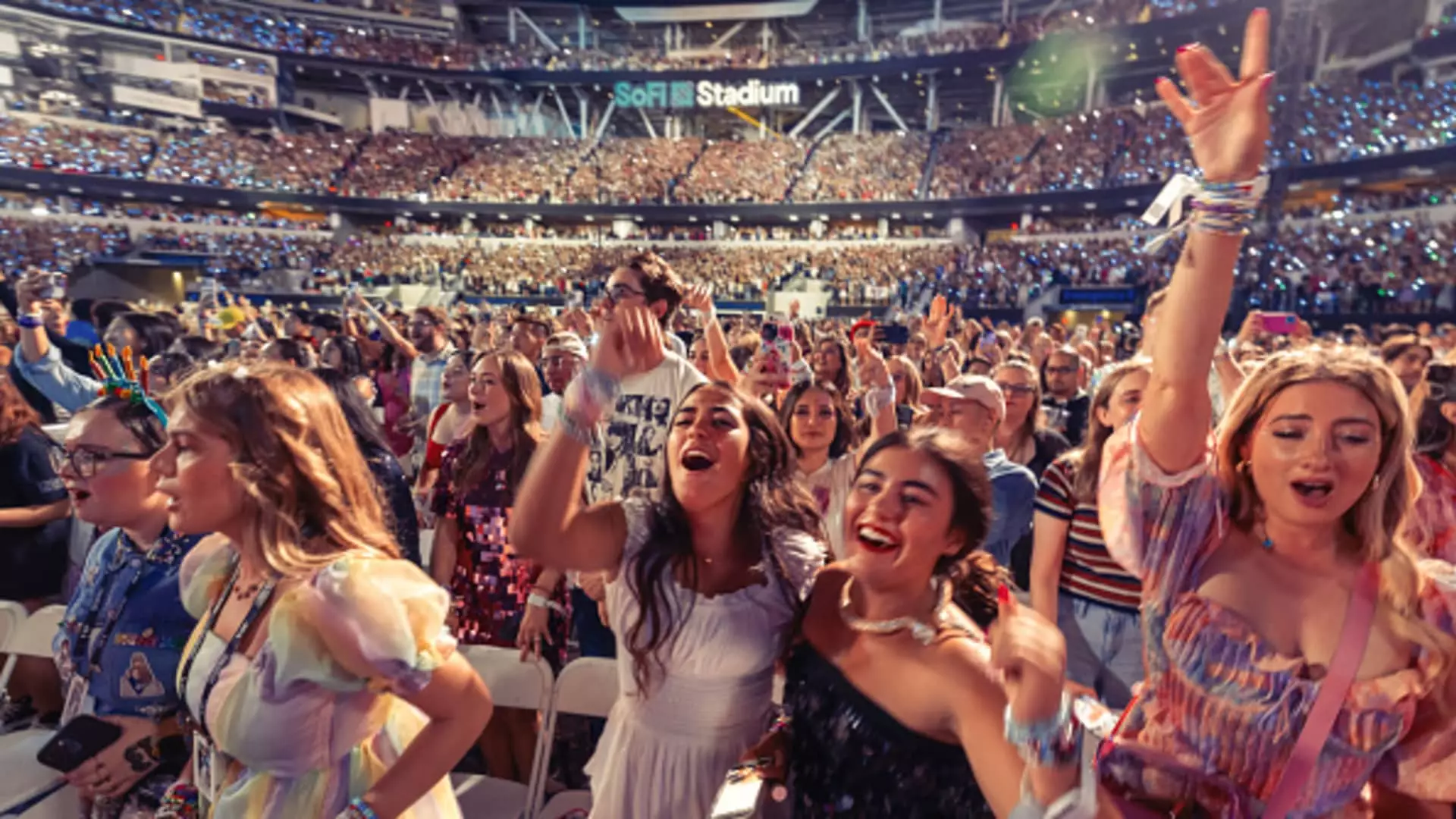In the wake of post-pandemic recovery, the live music scene is set for a significant boom in 2025. From artists like Billie Eilish and Kendrick Lamar to the musical stylings of Sabrina Carpenter and SZA, concert-goers are prepared to embrace a year filled with exhilarating live performances. However, this revival also comes with an aspect that is hard to ignore: soaring ticket prices, a phenomenon often referred to as “funflation.” As entertainment costs continue to rise, consumers are showcasing an impressive willingness to pay the price, further accentuating a cultural shift toward valuing experiences over savings.
According to data from the Bureau of Labor Statistics, concert ticket prices have skyrocketed by 20% since 2021. This sharp rise isn’t keeping users away. In fact, according to a recent survey by CouponCabin, the average concert-goer attended roughly seven shows in 2024, with many intending to increase that number in 2025. This phenomenon suggests that while prices may be on the up, consumers are still keen to invest in their musical passions, with nearly 36% of respondents indicating they would spend between $100 to $499 on tickets next year, and over 17% even willing to allocate up to $1,000.
The inclination towards “passion tourism” continues to gain traction, spurred by major events like Taylor Swift’s Era Tour. Individuals are traveling far and wide not only to attend concerts but to immerse themselves in the culture and atmosphere that these events encapsulate. Reports show that Gen Z and millennials are especially willing to incur debt for such experiences — with almost two out of five in these generations reportedly spending up to $5,000 on tickets for destination concerts. This trend reveals a societal shift wherein many prioritize memorable experiences over financial prudence.
A significant driver of these escalating ticket prices is the implementation of “dynamic pricing.” This strategy, which sets higher prices during peak demand, has been standard practice in industries like air travel and taxis for decades, but it is now making waves in the live music sector. Joe Bennett, a forensic musicologist at Berklee College of Music, explains how this model has gained acceptance among the public, highlighting a shift from fixed ticket pricing to more fluid pricing based on demand. It is a tactic that allows concert promoters to maximize their revenue based on market conditions, but it has also led to public controversy.
Recent high-profile cases, such as the backlash against Ticketmaster in the UK during the sale of Oasis reunion concert tickets, underline the contentious nature of dynamic pricing practices. Many fans found themselves paying prices that far exceeded the original ticket cost. Even Taylor Swift’s management reportedly chose to forgo dynamic pricing for her tour out of consideration for fans, a decision that drew significant attention. Despite its controversial nature, dynamic pricing appears to be here to stay, as the music industry seeks to capitalize on the post-pandemic rebound in live music attendance.
In the face of “funflation,” consumer attitudes are evolving. Although dynamic pricing is largely unpopular among ticket buyers, many have adopted a “you only live once” mentality when it comes to discretionary spending. Greg McBride, chief financial analyst at Bankrate.com, points out that despite tightened household budgets, there are experiences that consumers are simply unwilling to sacrifice. The current landscape suggests a behavior shift in which the value placed on shared experiences supersedes concerns about financial longevity.
Moreover, as more artists begin to utilize dynamic pricing as a strategy, ticket-selling platforms are responding to changing consumer expectations. They are conducting experiments to determine how much consumers are willing to spend, often resulting in a trial-and-error approach that can frustrate fans. The financial landscape of live music is becoming increasingly complex, demanding that consumers remain vigilant about the prices they encounter.
The concert-going experience is transforming, shaped by rising prices and the allure of live performances post-pandemic. As attendees reconcile their desire for unforgettable experiences with the realities of growing expenses, the phenomenon of funflation takes center stage. The live music industry appears poised for significant growth in 2025, but the implications of dynamic pricing and shifting consumer preferences will certainly continue to fuel discussions about the future of live entertainment. As concert-goers prepare to embrace this new era, only time will uncover the long-term effects of these changes on both artists and fans alike.


Leave a Reply